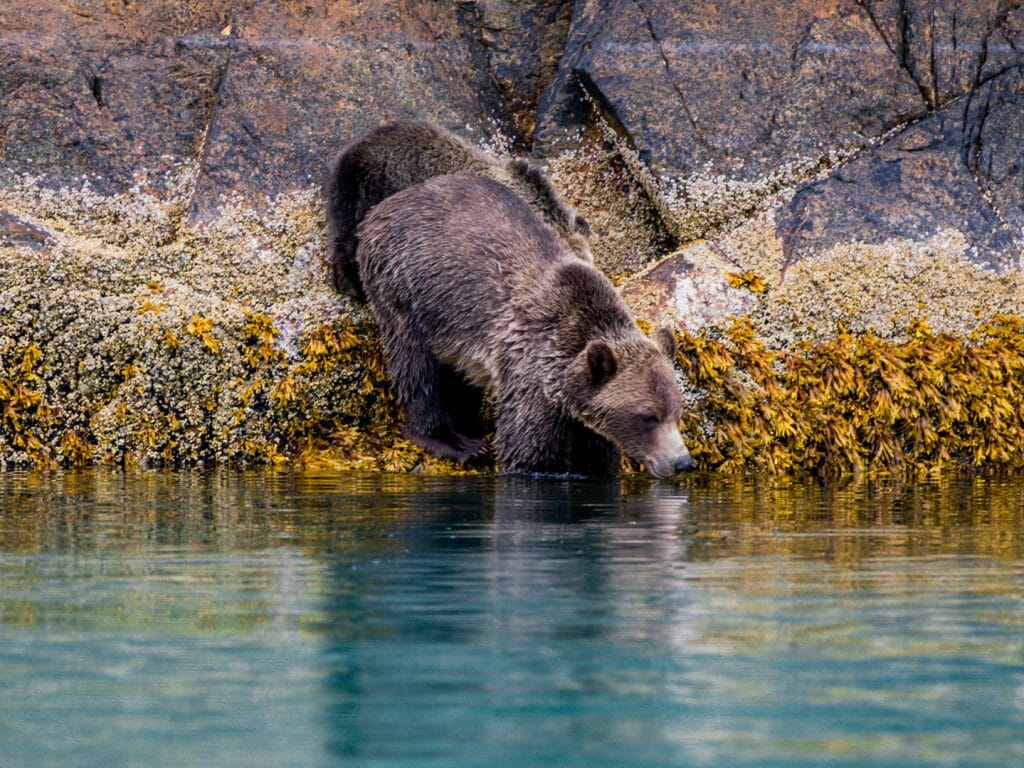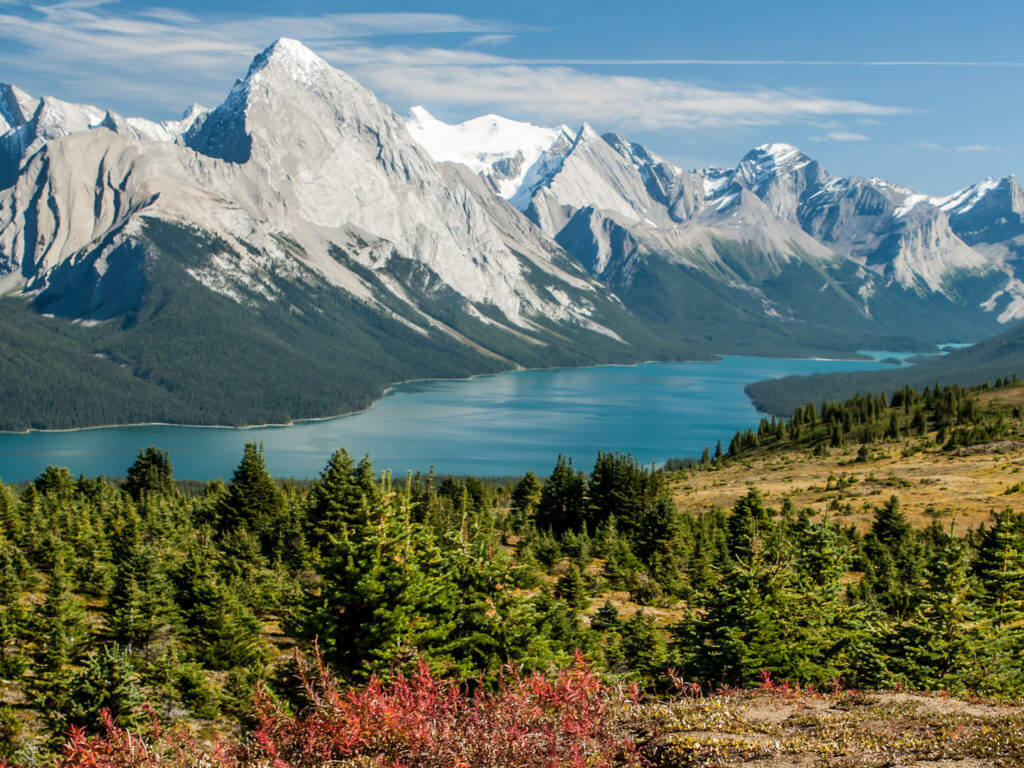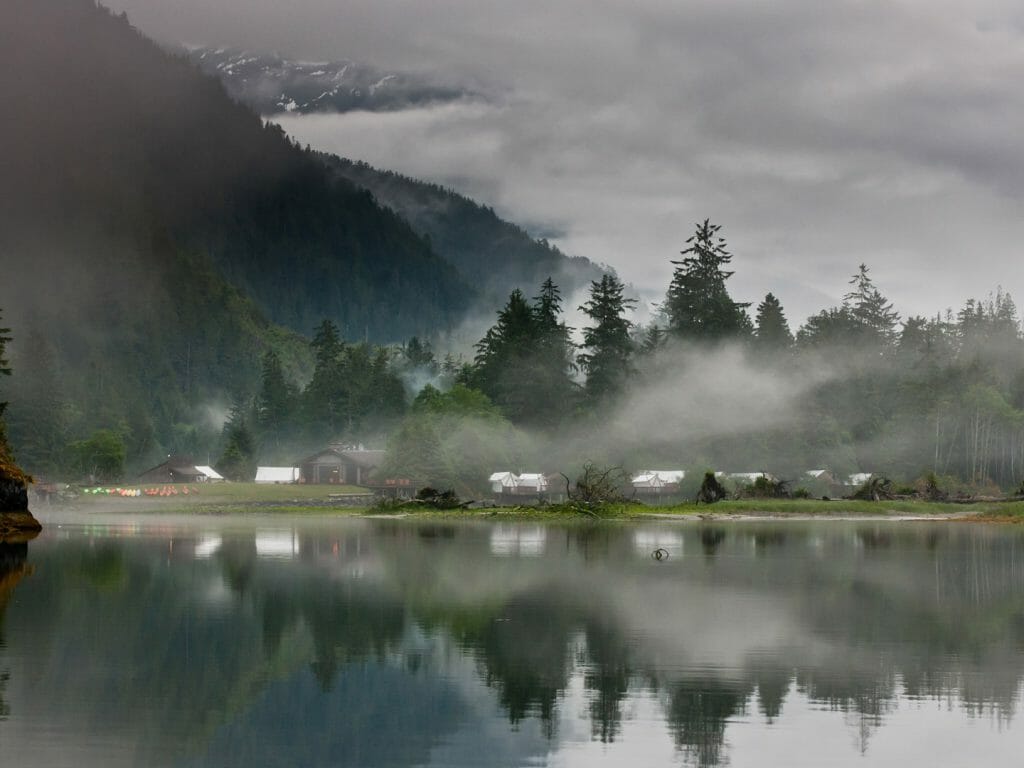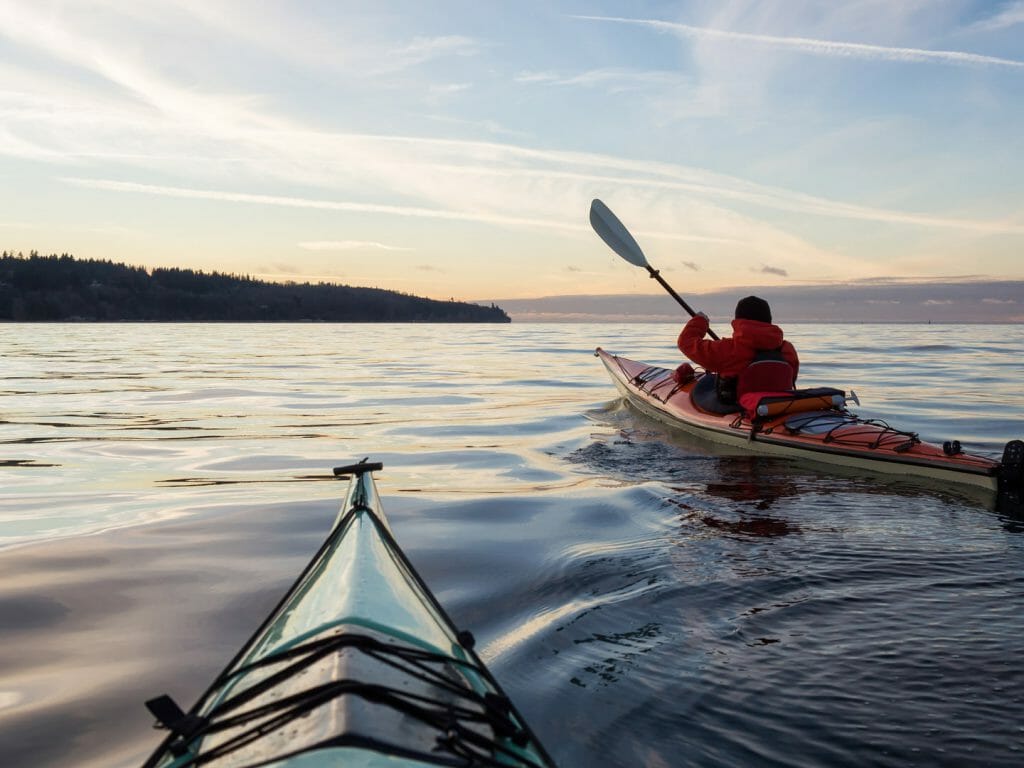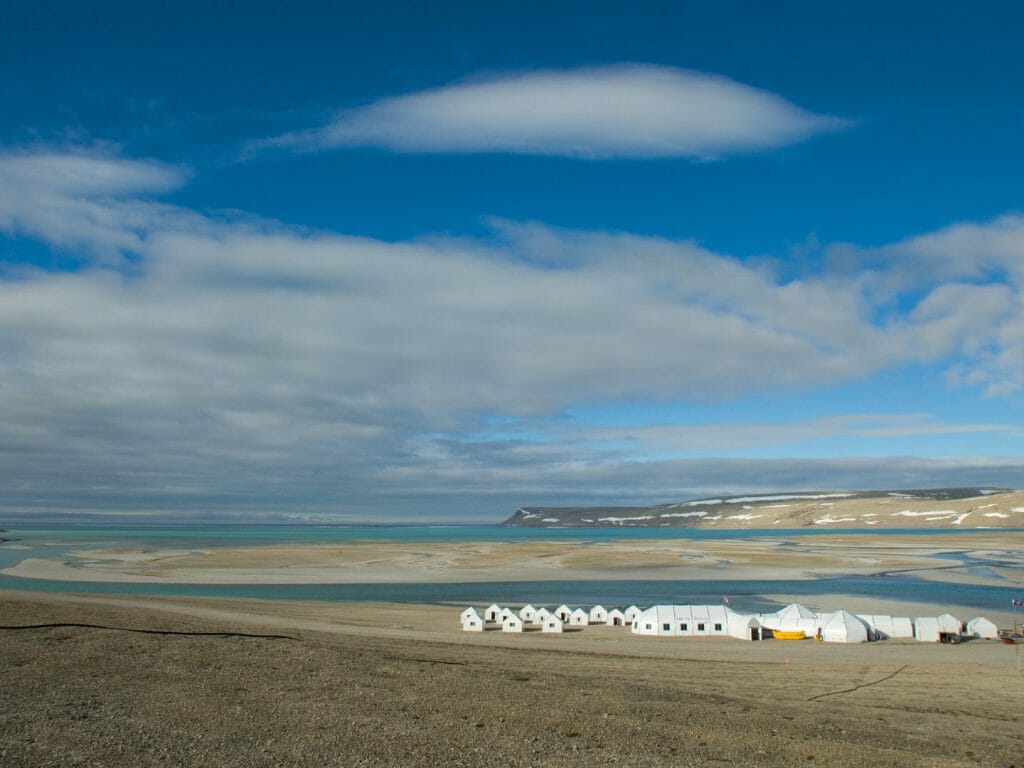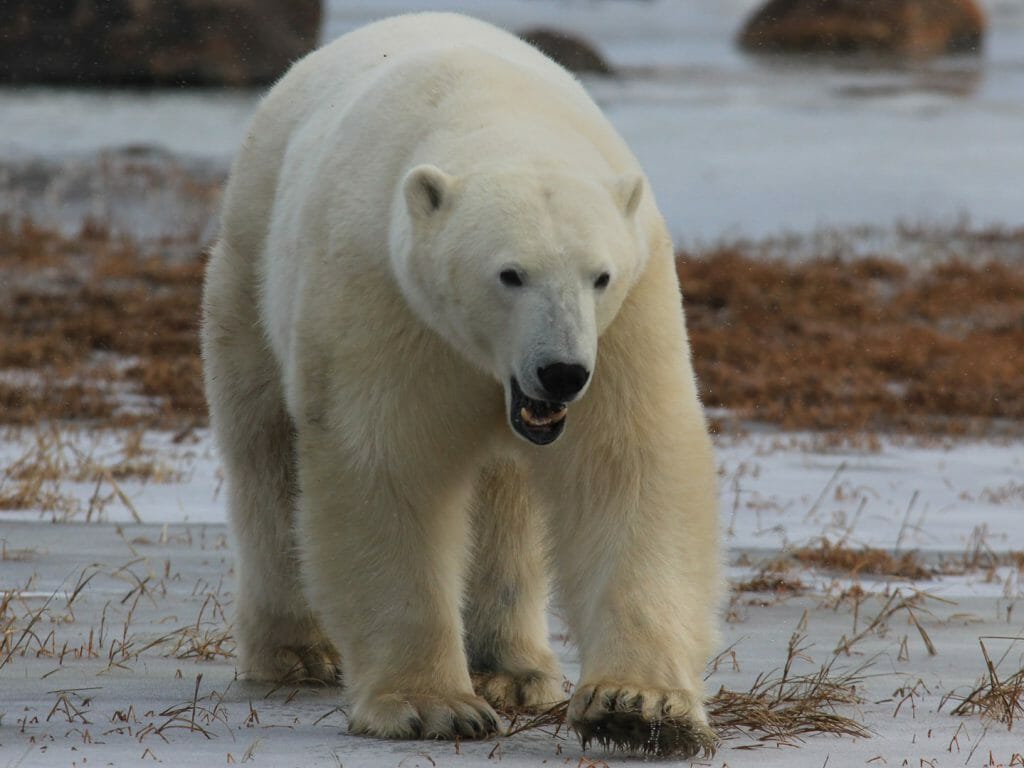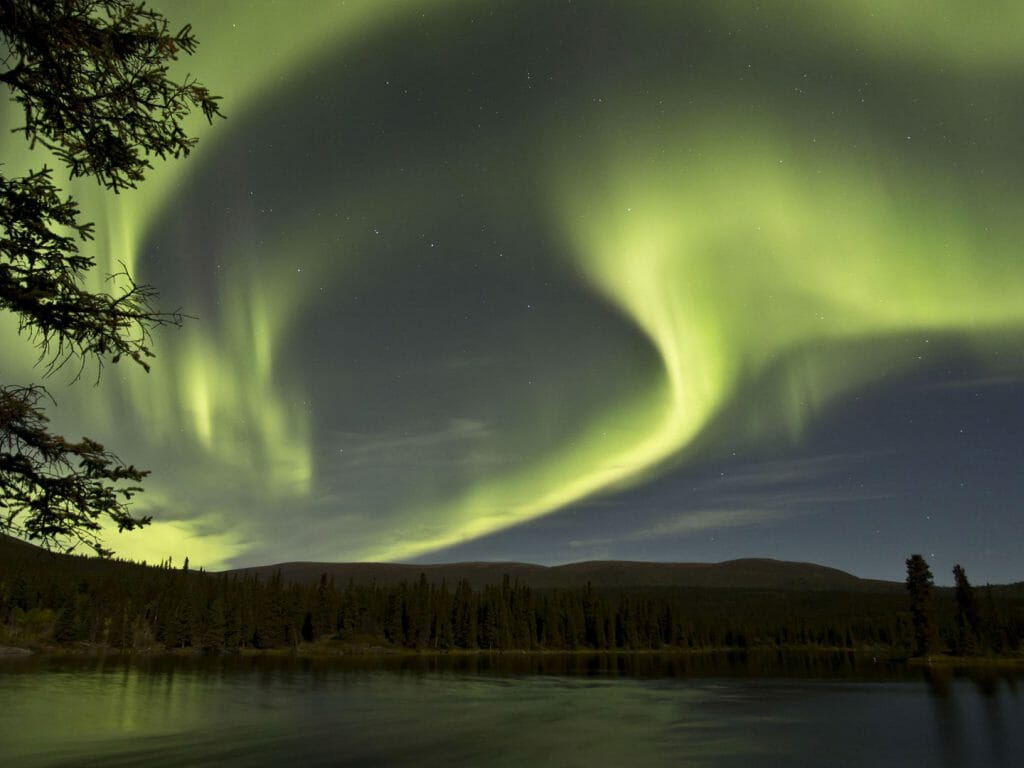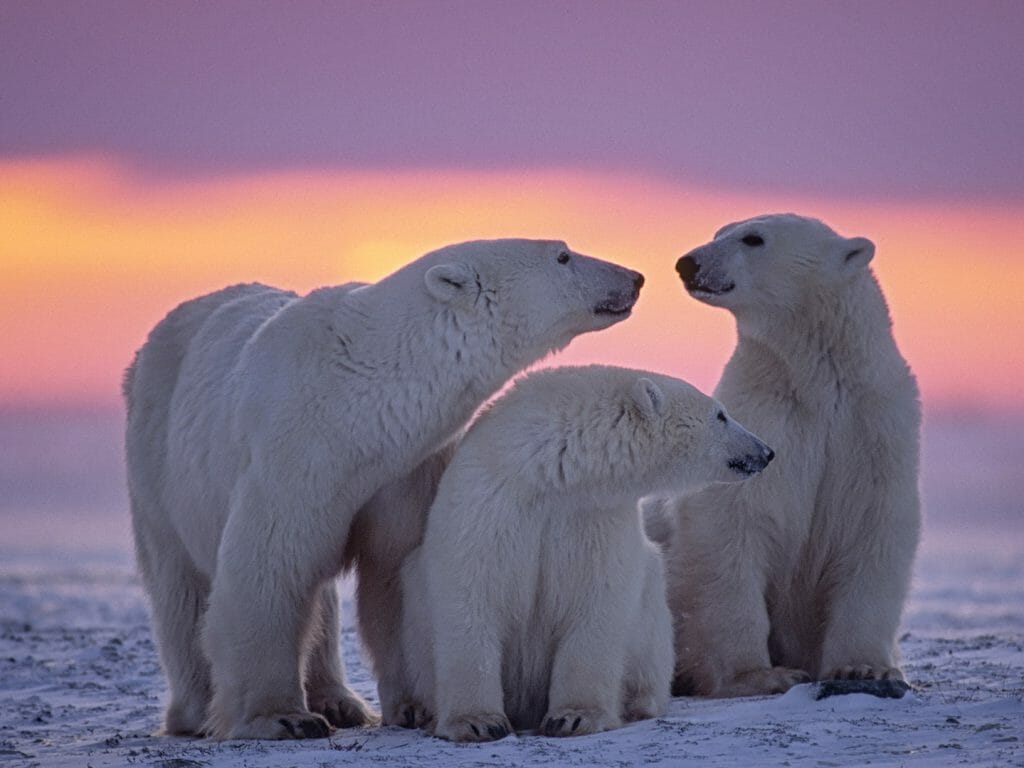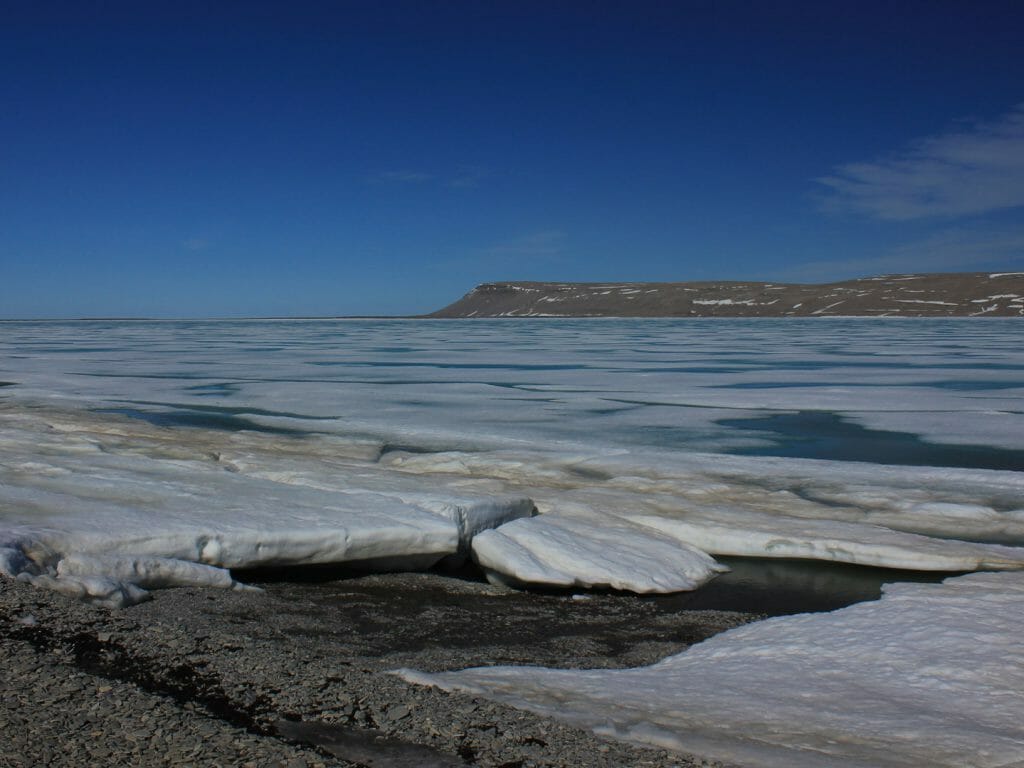The height of the aircraft gives me vantage and an appreciation of scale but I lack the sensual immediacy of place, the sounds and smells, the feel of the wind stinging my skin. The land is flat and vast and I struggle to find language to define a landscape that is so huge and monotonic. How to depict a realm of immensities and repetitions without trivialising or compromising it?
We descend into Churchill, a frontier town of 900 people on the shores of Hudson Bay, one thousand kilometres north of Winnipeg. Home to three main indigenous peoples – the Inuit, Denek and Métis – and a functional assortment of grey prefab apartment blocks, named seal, caribou and the like, huddle together against the northerly wind that whips off the bay. It is unprepossessing. The gloom of the buildings lifted by colourful murals that depict the local wildlife and are a metaphor of the tightrope balance of the devastation the community faced with the closure of railway.
Churchill is not a gastronomic experience. It owes its place on the map due to its geography that once gave it a key role in the fur trade. Churchill’s unique position, nestling in the heel of an L in Hudson Bay, means that sea freezes here first. This brings in the polar bears who gather here in September and October, milling about waiting for the formation of sea ice, so they can quit the coast and a life of sleeping and browsing in these summer retreats and head out into the ice in search of seals.
This in turn brings complications. The presence and proximity of bears means that no car doors are locked in Churchill and Hallowe’en trick-or-treating is not for the faint-hearted. Although its saving grace is that it is flat: “You can watch your dog running away from you for five days.”
There can be few more stark reminders of human wildlife conflict than the polar bear jail in Churchill. Officially known as the ‘Polar Bear Holding Facility’, the jail is where troublesome bears that are in or too close to town are detained before being relocated.
The bears are caught in an antiquated-looking cylindrical metal trap and not tranquilised – the aim is for the bear to remember the trauma of the experience and hence associate Churchill with bad memories. They are then transferred to the holding facility where they are incarcerated in a cell which has straw on the floor and a block of ice – the bears are not fed during the captivity as at this time of year bears are in a natural fasting cycle.
Within the facility the bear will be able to smell other bears, previous inmates, but not see them, which causes it confusion. Again the idea, whilst not harming the bear, is to associate Churchill and humans with negative associations that it will seek to avoid in future.
After a two-week jail sentence, the bear is given a strong muscle relaxant, placed in a cargo net and carried by helicopter some two hundred miles north-west. Whilst the eyes of the bear are covered – to stop them being damaged in the wind – the experience of dangling in a net beneath a helicopter flying over the tundra must be discombobulating at best. More polar bear mind games.
On average eight bears are apprehended a season and there was one inmate whilst I was in town. The repeat offender rate is low so however brutal the system seems, it is effective.
In search of non-offenders, we head out into the Wildlife Management Area; to the south lies Wapusk National park where few are allowed to enter – the animals left alone, it is a resting zone for bears. We are enclosed in an aluminium capsule, romantically called a Polar Rover. Its huge tyres – six six-foot tyres that are three feet wide – bounce over the Churchill quartzite and greywacke, a type of sandstone characterised by its hardness and dark colour. A nightmare for those with sore backs and the suspension specialist at the local garage. A safari on steroids, where Jurassic Park meets Interstellar.
The tundra, a Finnish word for treeless plain, initially appears barren but the wealth of biological detail hidden away dispels any feeling that the land is empty. The monotonic rock of the tundra desert harbours a myriad of colours, the colours of deserts, the ochres and siennas of stratified soils, the grey-greens of sparse plant life on bare soil. Rusty browns, weathered yellows and light green lichen – muted colours – are contrasted by the white of the ptarmigan.
I am aware that I miss much of what we pass due to my unfamiliarity and lack of acuity in my senses.
A tapestry of shallow tide ponds, the result of water not being able to drain due to permafrost, are lined with a thick matting of birch and willow. Stunted spruce trees are shaped like flags due to the wind whipping off the bay. These are not young new trees but old trees whose growth is constrained by the wind and lack of light and warmth. The German word krummholz, literally meaning crooked, bent and twisted wood, defines the stunted, deformed vegetation shaped by continual exposure to the fierce, freezing winds.
It sounds a contradiction but it is an inherently vulnerable yet resilient ecosystem. There are few species – only twenty or so of the 3,200 mammal species – that live beyond the tree-line in the cold. One of those is the polar bear.
“Polar bears are late this year,” someone comments. But they are not; we are not on their schedules, their appointments are not solely with us. Moreover, we are the ones disrupting their timetables.
For millennia the Arctic Ocean has frozen over winter and then gradually melted over spring and summer but over the last forty years the extent of the summer sea ice has declined by 50%. Some predict the Arctic sea will be ice-free by the summer of 2035.
The sea ice is peak habitat for the polar bear. Polar bears are trying to adapt to the loss of sea ice but how successful they will be remains to be seen. Scientists predict that by 2050, as a result of sea-ice loss, the world will lose a third of its polar bears. The rest will be climate refugees.
It is hard to travel in the region and not be struck by the evidence of recent change. Cracks are appearing in the houses of Churchill due to the shifting of the permafrost.
Seen as isolated separate dots the change does not appear to amount to much but the ripple effect is devastating. The issue is the concentration of power in the hands of people with enormous economic resources but a poorly developed geographic sense of region. The Inuit (a word which means the people; Eskimo was a word used to describe the Inuit by indigenous groups to the south and is alleged to mean raw meat-eater or those who walk on snow) refer to us as ‘the people who change nature’.
The white of an Arctic fox pops against the muted colours of the tundra. A snowy owl streaks past to a low rasping hoot of excitement. And then a bear is spotted.
A somewhat surprising yellowy white for a bear named polar. But then Churchill’s latitude is seven degrees north of London and seven degrees south of the Arctic circle. We are 483 miles south of the Arctic or Artikos, the Greek word for the region, the country of the bear, the lands that lie beneath Ursa Major (ursa being the Latin word for bear). Perhaps the Inuit name, Nanuk, meaning great wanderer, is more apt for this bear. Nanuk is the great wanderer not solely because it travels far but because it travels with curiosity and tirelessly. Curious bears may in the end eat more often.
I raise my binoculars to my eyes. They deny me periphery but give me focus and I see the bear snuggling in a thicket of willow. The wind is rushing off the bay, the slanted rain lashing down, so he seeks shelter on the leeward side. He is comfortable with the temperature but not so much with the wind on his nose.
His inactivity is an opportunity for us to learn about polar bears.
Polar bears evolved from a brown terrestrial omnivore to a white marine carnivore that has long thrived in the Arctic’s icy environment. Whilst the brown bear is broad stout and dish-faced, the polar bear is narrow-shouldered, Roman-nosed, with small ears and highly specialised sense of smell.
Between April and late June, male polar bears search for female mates on the sea ice by following scented trails left by footpads. Mating takes place on the sea ice but the fertile eggs don’t implant until autumn and only if the female has enough fat to sustain herself and her cubs during the long denning period through winter. This process is called delayed implantation, something that speaks of survival of the fittest in this harshest of regions.
Young bears leave their mothers not long after 24 months and it is this first summer alone that polar bears suffer the greatest mortality. It lacks experience, an indispensable attribute for a successful hunter.
They hunt seals on the ice during winter. In summer, they relax and hang out, trying to do as little as possible – they have more problems overheating than they do with cold.
As the rain drives horizontally, our guide mutters “There will be a lot of sleeping bears today.” Sorry to mix my metaphors but there is a lot of truth in letting sleeping bears lie. There is a lot of truth in the Inuit word for deep patience, Quinuituq.
But patience is rewarded hours later. A young male bear saunters along in what the unrivalled American writer Barry Lopez describes as “the undeterred walk of authority”. He comes towards us, his front legs swing out to the side and his huge paws fold towards his body like paddles. His sinuous movement is a walk of supple agility.
His progress is soundless. His huge paws are thickly furred between the pads for insulation and silence. He steps on the outside of his heel and rocks forward noiselessly. I feel for his prey.
The bear strains his neck upwards and his large sleek black nose pulls the air across his nasal membranes straining for scent. He smells us and we smell him. We don’t breathe but hear his breathing. A moment seared in the memory.
Time moves on. The winds change. The temperature is minus three but the wind speed is over sixty miles an hour, making the wind chill minus twenty. It bites hard into your skin. It hurts. It blasts the landscape. It changes the environment, it starts to freeze the sea. It is time for Nanuk, the great wanderer, to head out onto the frozen wastes.


